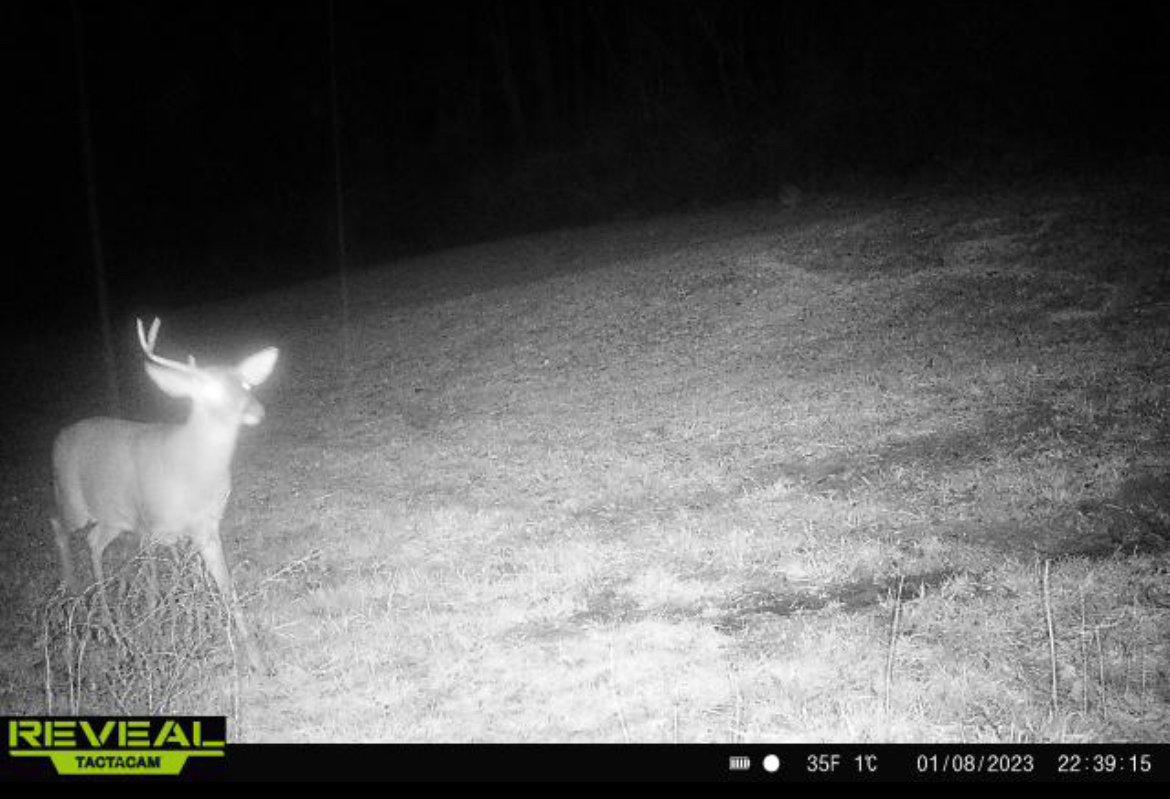Many whitetails are dropping antlers sooner than expected. What's behind this phenomenon?
Each year, bucks grow new antlers in spring and summer, carry them for most of fall and winter, and then shed them toward the end of the colder months. That process happens annually for normal, healthy bucks.
However, this year, there are many reports of bucks shedding antlers earlier than normal. In fact, I've seen that where I hunt in Kentucky and Ohio. Multiple bucks had already shed when I shot my Ohio deer a few days ago.
So why are some bucks shedding antlers early?
The Normal Process
Before diving into possible causes of early shedding, it's important to understand the normal antler shedding process. According to Kip Adams, chief conservation officer for the National Deer Association, the antler growth, mineralization and casting process is mostly controlled by photoperiod (daylight length) and hormones (testosterone levels).
Much has been written on this subject, and you can find detailed accounts of the complex interactions between the pineal and pituitary glands, testes and the hormone cocktails involved in the process, Adams said. In brief, antlers generally grow during spring and summer and mineralize in August and September in response to increasing testosterone levels. Testosterone levels begin increasing in July, peak in late October to early November, drop through late December, and remain at reduced levels through the following July. The testosterone cycle is largely governed by photoperiod, so just as decreasing daylight and increasing testosterone cause antlers to mineralize and shed their velvet, increasing daylight and decreasing testosterone cause antlers to fall off.
1. Genetics
Some early shedding is genetics-related, Adams said. However, that's for individuals rather than widespread shedding.
Folks who hunt the same properties for years might see specific bucks exhibit that.
I have. On my Ohio lease, one buck has shed in December the past four years. That's significantly earlier than other bucks in the area, which typically cast their antlers from mid-January through mid-March.
2. Injuries
Injuries to individual animals can cause them to shed early, too Adams said.
Injuries that make it more difficult for a deer to feed or that require a lot of resources to heal are even more likely to spark early shedding.
I have anecdotal experiences with that, too. Many injured bucks I've had on trail cameras from the past 15 years seemingly shed sooner than their healthy cohorts.
3. Disease
Some deer are hit with various diseases. Hemorrhagic disease — including bluetongue and epizootic hemorrhagic disease, two similar viral diseases — isn't always fatal. Deer that live through it often shed early. Some believe it's possible that the latter stages of chronic wasting disease, which is always fatal, might spark early shedding, too. Other deer diseases can do the same.
4. Harsh Conditions
Difficult, harsh conditions can increase the stress levels of deer. Significant flooding, severe drought, long cold spells and other stressors can also provoke an earlier-than-normal antler drop.
This year, a lot of areas dealt with significant drought. Many hunters in those spots are seeing early antler casting. The same is true for parts of the country that have dealt with seriously cold weather.
5. Nutritional Stress
The most common cause of early shedding, especially if it's noticed on a wide scale, is generally food- and resource-related. Not having enough to eat can make deer lose their headgear earlier than normal.
It's typically caused by nutritional stress, Adams said. Widespread early shedding is nearly always a result of nutritional stress to the deer herd. This even happens in agricultural areas when deer numbers are higher than the annual food supply. There may be overabundant food during the growing season, but deer in ag areas routinely suffer during winter and spring.
The Opposite Effect
As mentioned, many factors can make deer drop their antlers earlier than expected. But the opposite effect can occur, too. Great health, low stress, mild weather, plenty of food and abundant late-season estrous does can keep testosterone levels elevated later into winter. As a result, deer can carry their antlers longer than usual. But that doesn't seem to be the case this season. The opposite is occurring.
Don't get upset by the early shedding this season, even if you're still packing a buck tag. There's much to be gained from picking up sheds. Plus, it also means that shed season kicks off sooner. That's something to look forward to.
Hunters can learn a lot from the sheds they find. They can determine if a buck made it through the season, where that buck spent time during the late season and the quality of habitat at their hunting grounds. They can also determine the state of the buck's health by studying the timing of the drop and the depth of the pedicle on the antler, or underside of the base. The more bone protruding above the seal line, the healthier the deer.
(Don't Miss: 5 Giant Whitetail Buck Stories from 2022)












